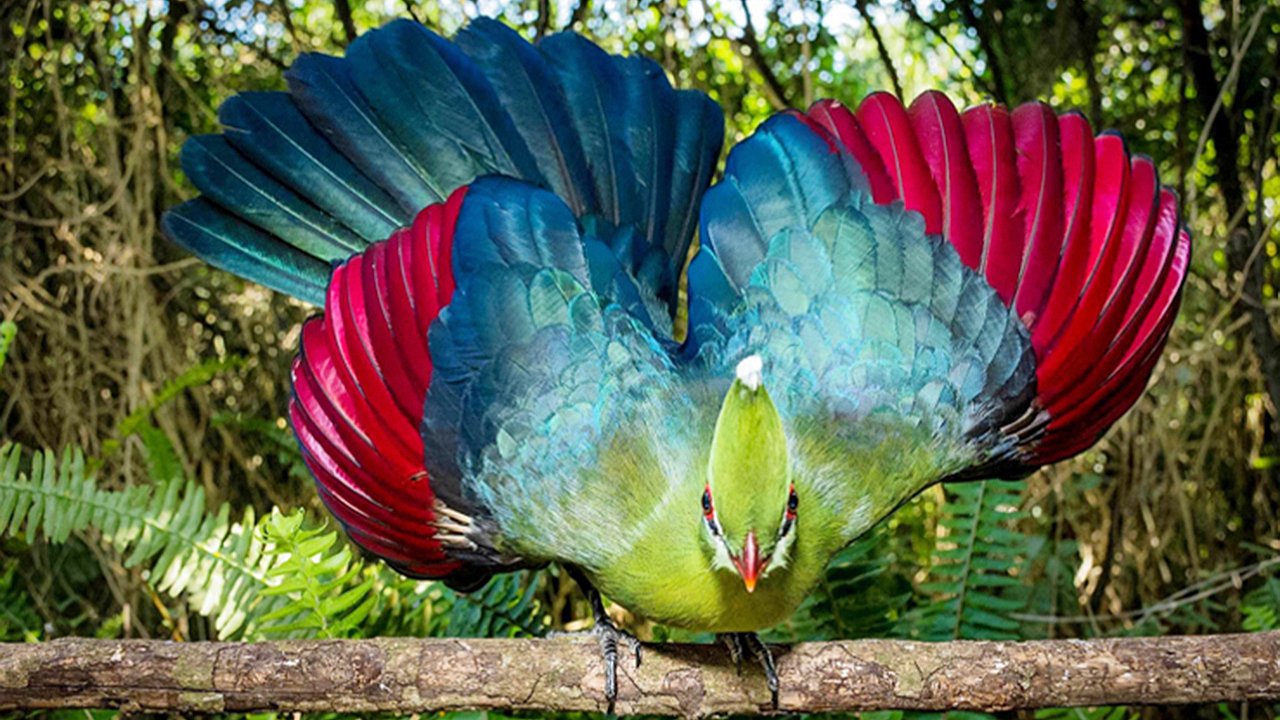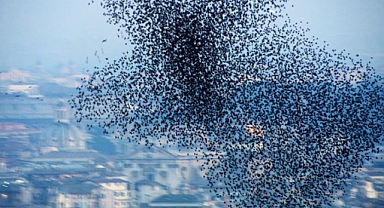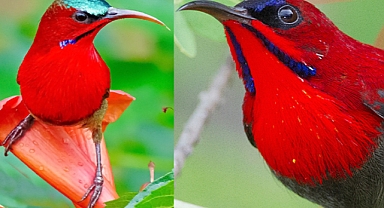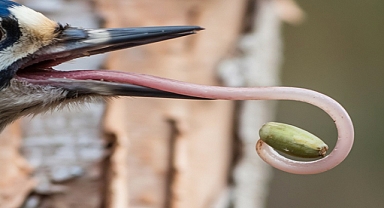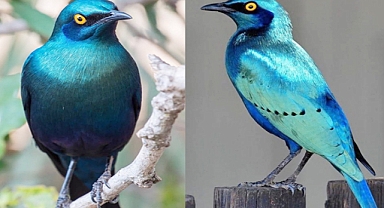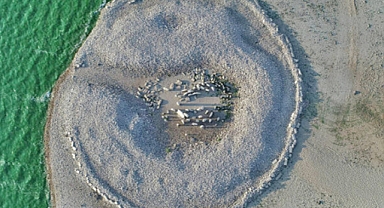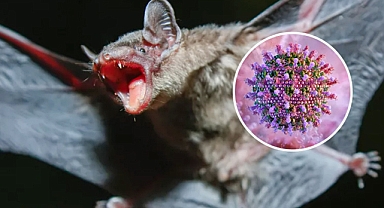Once considered a subspecies of the green turaco of West Africa, the Knysna turaco shares close relations with Livingstone's and Schalow's turacos. Recognized for its unmistakable appearance, this bird often remains concealed in the dense treetops. Measuring around 40–42 cm in length, including its long tail, it possesses a vibrant green body, a striking white stripe below the eye, and a distinctive orange-red beak. The bird's tall, green crest, tipped with white, and its deep red eye-ring add to its dramatic look. However, its most spectacular feature is its crimson primary flight feathers, which become highly visible when in motion. Both male and female turacos appear similar, but juveniles have shorter crests without the white tips.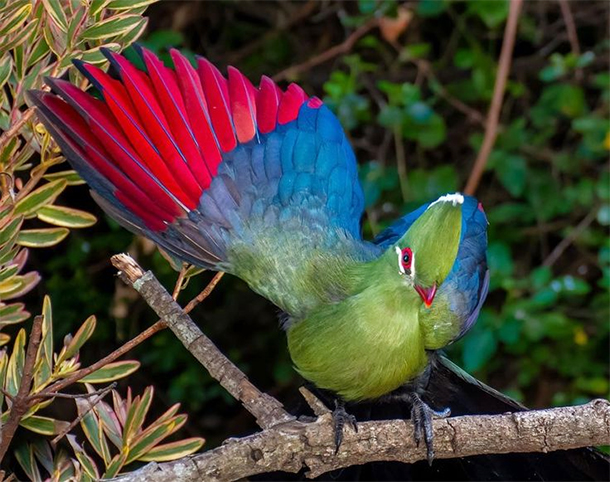 A Master of Movement and Survival
A Master of Movement and Survival
The Knysna turaco is typically observed gliding through the treetops or hopping nimbly across branches. It primarily feeds on fruit but will also consume insects and earthworms. Its call is a loud and repetitive "kow-kow-kow-kow," resonating through the forest canopy.
Unlike most birds, whose colors are the result of light reflection off feather structures, turacos possess unique pigments: turacoverdin (green) and turacin (red). These pigments contain copper, meaning if you stirred a red turaco feather in water, the liquid would turn pink! Interestingly, in museum specimens, these pigments deepen over time due to copper oxidation.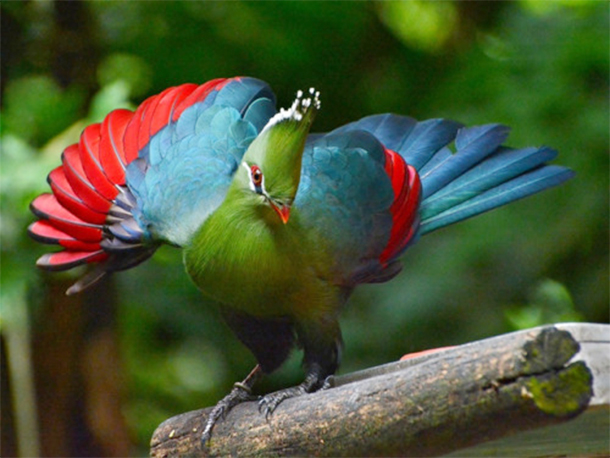 A Clever Defense Mechanism
A Clever Defense Mechanism
Maintaining their vivid coloration throughout the year, Knysna turacos are believed to use their red flight feathers as a survival tactic. When pursued by a predator, the red feathers serve as a visual distraction. As the bird lands and folds its wings, the red disappears, allowing it to seemingly vanish into the foliage, evading danger.Fascinating Facts About the Knysna Turaco
What Type of Bird is the Knysna Turaco?
Belonging to the Musophagidae family, turacos share lineage with go-away birds and plantain eaters. While commonly referred to as loeries in South Africa, they are internationally known as turacos.
Which Class Does It Belong To?
The Knysna turaco falls under the class Aves and family Musophagidae, comprising multiple species across Africa. According to the IOC World Bird List (version 10.1), there are 23 recognized species within six genera.
Where Can the Knysna Turaco Be Found?
These birds inhabit dense, mature evergreen forests across southern and eastern South Africa, including Swaziland, Mozambique, and all regions of the Cape—Northern, Eastern, and Western.
What is Their Habitat?
Preferring broad-leaved evergreen forests, the Knysna turaco is a non-migratory species. Active during daylight hours, it moves energetically between trees, often seen leaping and gliding among branches.
Do Knysna Turacos Live in Groups?
Knysna turacos are social birds, frequently moving in small, vocal flocks. They exhibit territorial behavior, staying within close-knit family groups or pairs. During the breeding season, they nest alone or with a mate.
How Long Do They Live?
In captivity, these birds can live up to 30 years. Their lifespan in the wild remains uncertain due to limited research.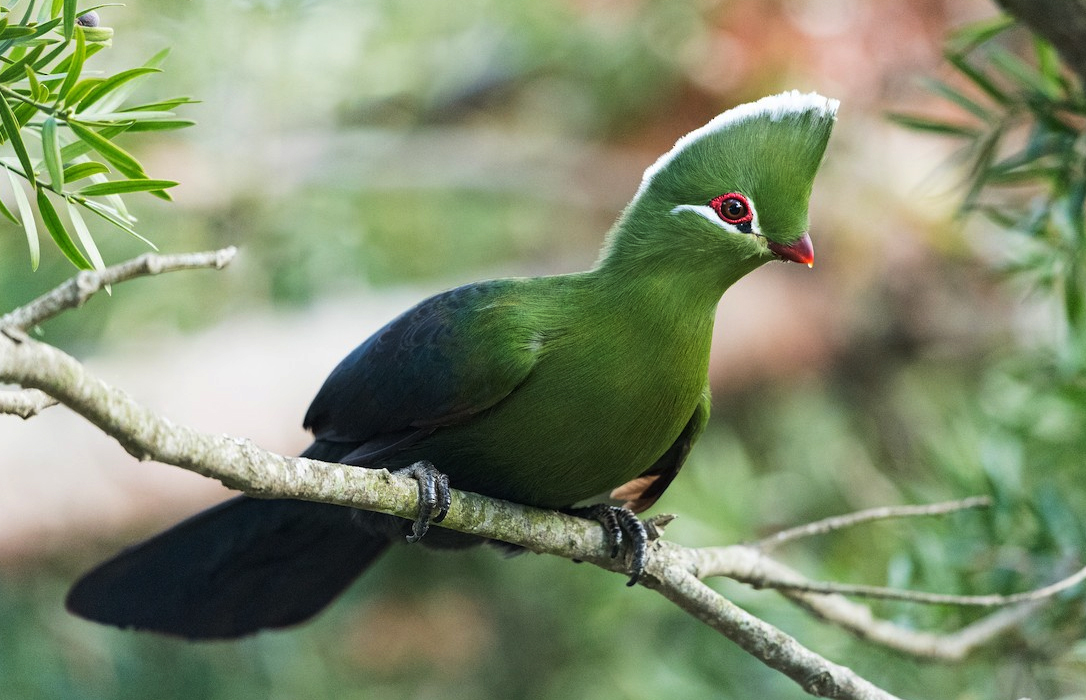
Breeding and Reproduction
Knysna turacos practice monogamous breeding, with the breeding period varying by region. The female lays two eggs in a shallow, stick-formed nest within tree branches or dense creepers. Both parents share incubation duties for 20–24 days. Chicks remain in the nest for about 22 days and begin flying at around 28 days. They gain independence by three weeks of age.
 A Master of Movement and Survival
A Master of Movement and SurvivalThe Knysna turaco is typically observed gliding through the treetops or hopping nimbly across branches. It primarily feeds on fruit but will also consume insects and earthworms. Its call is a loud and repetitive "kow-kow-kow-kow," resonating through the forest canopy.
Unlike most birds, whose colors are the result of light reflection off feather structures, turacos possess unique pigments: turacoverdin (green) and turacin (red). These pigments contain copper, meaning if you stirred a red turaco feather in water, the liquid would turn pink! Interestingly, in museum specimens, these pigments deepen over time due to copper oxidation.
 A Clever Defense Mechanism
A Clever Defense MechanismMaintaining their vivid coloration throughout the year, Knysna turacos are believed to use their red flight feathers as a survival tactic. When pursued by a predator, the red feathers serve as a visual distraction. As the bird lands and folds its wings, the red disappears, allowing it to seemingly vanish into the foliage, evading danger.Fascinating Facts About the Knysna Turaco
What Type of Bird is the Knysna Turaco?
Belonging to the Musophagidae family, turacos share lineage with go-away birds and plantain eaters. While commonly referred to as loeries in South Africa, they are internationally known as turacos.

Which Class Does It Belong To?
The Knysna turaco falls under the class Aves and family Musophagidae, comprising multiple species across Africa. According to the IOC World Bird List (version 10.1), there are 23 recognized species within six genera.
Where Can the Knysna Turaco Be Found?
These birds inhabit dense, mature evergreen forests across southern and eastern South Africa, including Swaziland, Mozambique, and all regions of the Cape—Northern, Eastern, and Western.
What is Their Habitat?
Preferring broad-leaved evergreen forests, the Knysna turaco is a non-migratory species. Active during daylight hours, it moves energetically between trees, often seen leaping and gliding among branches.

Do Knysna Turacos Live in Groups?
Knysna turacos are social birds, frequently moving in small, vocal flocks. They exhibit territorial behavior, staying within close-knit family groups or pairs. During the breeding season, they nest alone or with a mate.
How Long Do They Live?
In captivity, these birds can live up to 30 years. Their lifespan in the wild remains uncertain due to limited research.

Breeding and Reproduction
Knysna turacos practice monogamous breeding, with the breeding period varying by region. The female lays two eggs in a shallow, stick-formed nest within tree branches or dense creepers. Both parents share incubation duties for 20–24 days. Chicks remain in the nest for about 22 days and begin flying at around 28 days. They gain independence by three weeks of age.
